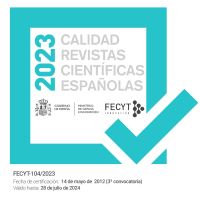El abuso de autoridad docente: desarrollo de un instrumento de medida
DOI:
https://doi.org/10.5944/reop.vol.29.num.1.2018.23294Palabras clave:
Abuso docente, autoridad docente, clima escolar, abuso escolar, bullying by teachers, school bullying, aggression, classroom managementResumen
RESUMEN
Actualmente no existen antecedentes de herramientas robustas de evaluación del Abuso de Autoridad Docente en el contexto español. El objetivo del estudio es presentar el proceso de desarrollo de la Escala de Abuso de Autoridad Docente Percibido (EAADP) así como plantear un modelo de medida que permita estructurar teóricamente la escala. La escala fue aplicada a una muestra de 306 estudiantes de Madrid capital con edades comprendidas entre los 14 y 18 años. Los resultados muestran que el instrumento obtiene adecuados valores de consistencia interna y el análisis factorial sustenta la estructura multidimensional propuesta para la escala. El modelo final consta de cuatro factores de primer orden, o estilos de abuso (distante, degradante, sancionador y arbitrario), y una variable latente denominada Abuso de Autoridad Docente (AAD). Además, el AAD correlaciona negativamente con el bienestar personal y académico de los alumnos. La EAADP permite medir con validez y fiabilidad el abuso de autoridad docente percibido por los alumnos a lo largo de su escolaridad.
ABSTRACT
This study focuses on the unfair treatment some teachers have with their students, abusing their authority and consequences on personal and academic welfare. Currently there is no history of robust assessment tools of Teacher’s Abuse of Authority in the Spanish context. The aim of the study is to present the development process of the Scale of Perceived Teacher Abuse of Authority (EAADP) and propose a model to structure theoretically the scale. The scale was applied to a sample of 306 students in Madrid, aged between 14 and 18 years. The results show that the instrument obtains adequate values of internal consistency and factor analysis supports the proposal for the scale multidimensional structure. The final model consists of four first-order factors or styles of abuse (distant, degrading, punitive and arbitrary), and a latent variable named Teacher Abuse of Authority (AAD). In addition, the AAD negatively correlated with personal and academic wellbeing of students. EAADP measures with validity and reliability the teacher abuse of authority perceived by students throughout their schooling.






